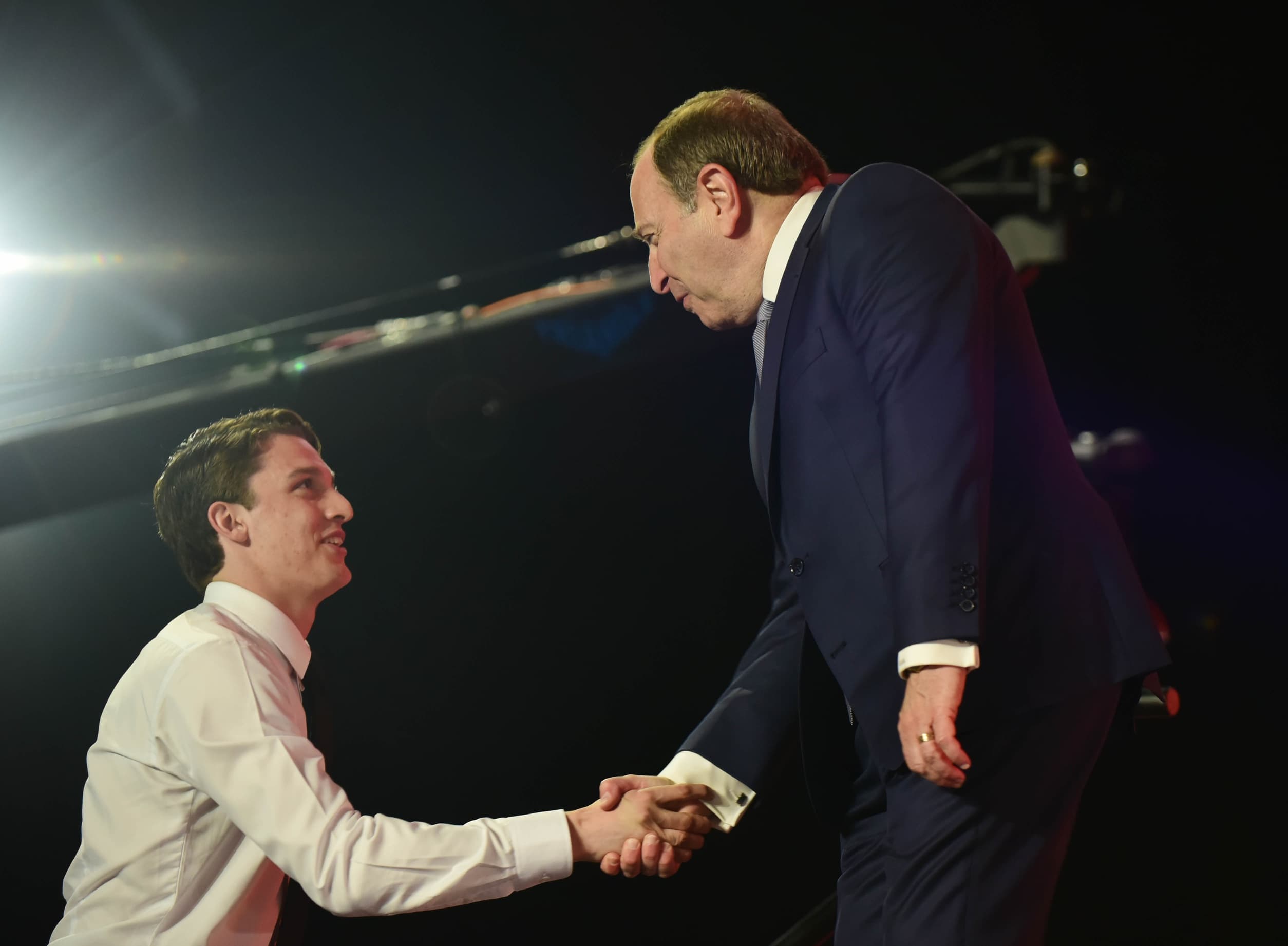Nation Sites
The Nation Network
FlamesNation has no direct affiliation to the Calgary Flames, Calgary Sports and Entertainment, NHL, or NHLPA
Low salary cap is short term pain for long term gain

Photo credit: Anne-Marie Sorvin/USA Today Sports
It’s safe to say all 31 National Hockey League clubs were caught off-guard in June when the salary cap rose much less than was originally anticipated. Rather than operating with a cap ceiling in the vicinity of $83-84 million, the 2019-20 cap was set at $81.5 million – the smallest year-over-year increase since the cap’s inception following the 2004-05 lockout.
However, there’s a lot of evidence to suggest the low salary cap will be inflicting short term pain on NHL teams and players for longer term gain.
Much ado about escrow
If you’ve followed the ongoing Collective Bargaining Agreement talks between the league and the players, you’ve probably heard far too much about escrow. Here’s the gist of how the salary cap is calculated each year:
- At the June NHL Board of Governors meeting, the NHL’s finance people present the prior season’s financials and a forecast for the following season’s revenues.
- Based on the revenue forecast, they present a number to the NHLPA – generally the middle-of-the-road forecast – for their approval. The cap should be, in theory, 50% of the NHL’s forecasted revenue.
- The NHLPA has the option to “escalate” the cap figure, which articificially inflates the cap ceiling for that season.
- If the NHL’s revenue forecasts are accurate, there’s no issues. If they aren’t that’s where escrow comes in.
Stephen Whyno of the Associated Press had a nice explanation of how escrow works:
Under terms of the collective bargaining agreement, NHL owners and players divide hockey-related revenue 50/50, and if player salaries exceed that split a certain percentage is withheld in escrow to make it even…The CBA sets aside some part of a player’s salary in a bank account throughout the year. After the season, total revenue is calculated and if the league is not at its 50% share, it gets the escrow money to make up the difference.
Given that players are a bit upset about signing multi-million dollar contracts and then losing a big chunk to escrow, the apparent approach to combating escrow in the short term has been neglecting to use their escalator – the cap increase for 2019-20 is based primarily upon revenue projections and doesn’t include much of an NHLPA-induced buffer.
Not using the escalator has resulted in less money in the system for this season (and potentially also 2020-21), which puts teams in a tight cap situation and results in less money available for the current crop of free agents. But those players are taking a bit of a hit for the greater good, as the entire NHLPA membership benefits from lower escrow percentages.
The live sports rights fee bubble
That said, don’t expect the cap to be staying low for too long for one big reason: the upcoming NHL United States television deal.
The current contract with NBC Universal expires following the 2020-21 season. Since the NHL signed their 10 year, $2 billion deal in 2011, tons of other sports properties have capitalized on the perception that live sports is PVR-proof (and “the last vestige of appointment TV”):
- The National Football League gets about $8 billion per year from their TV deals – $255 million per team (signed in 2011)
- Major League Baseball makes around $1.5 billion on their current deal – $50 million per team (signed in 2013)
- The National Basketball Association gets around $6.2 billion per year – $207 million per team (signed in 2014)
- The Ultimate Fighting Championship gets around $300 million per year from ESPN (signed in 2018)
- World Wrestling Entertainment gets about $462 million for their TV deals with USA Network and FOX (signed in 2019)
You can make a good case that the NFL and NBA are bad comparisons for the NHL, since the other two leagues remain very hot with the casual sports fan. But two things drive TV deals these days: casual fan interest and networks’ desires for live content.
Baseball’s deal with FOX was 40% larger than their previous deal. The NBA (who are hot) tripled their previous TV deals in value, but WWE (who are not hot) also managed to triple their TV revenue. The universe of likely possibilities is probably bounded by the FOX baseball and WWE deals. A pessimistic view is probably the NHL doubling their prior deal, presuming the live TV bubble doesn’t burst between now and late 2020.
It’s inevitable that the cap for 2021-22 will be larger, potentially significantly so, than we’ll experience in 2019-20 or 2020-21. The additional television revenues will have a fairly significant impact. Right now, the combined contribution of the NBC and Sportsnet deals is roughly $20 million towards the cap per team. Should the new American TV contract have a big increase over the prior version, we could see an immediate jump in the cap of around $8-10 million (and that’s based on a lower-end projection of the contract’s value) – and that’s not including the revenue increase the league will see from adding Seattle to the fold.
Needless to say, the players aren’t thrilled with the lower cap number this season. But they have their eyes on the future, one where potentially escrow isn’t a concern anymore and the cap ceiling is much, much higher than it is right now.
Recent articles from Ryan Pike
Breaking News
- Throwback Thursday: Looking at the Calle Järnkrok trade with the Kraken
- Flames injury news: Jake Bean to undergo surgery, out ‘indefinitely’
- Flames roster news: Dryden Hunt placed on waivers in advance of holiday roster freeze, Justin Kirkland called up
- World Juniors: Flames prospects Zayne Parekh and Cole Reschny survive Team Canada roster cuts
- Flames Game Day 35: Visitors from the Emerald City (7pm MT, SN1)
